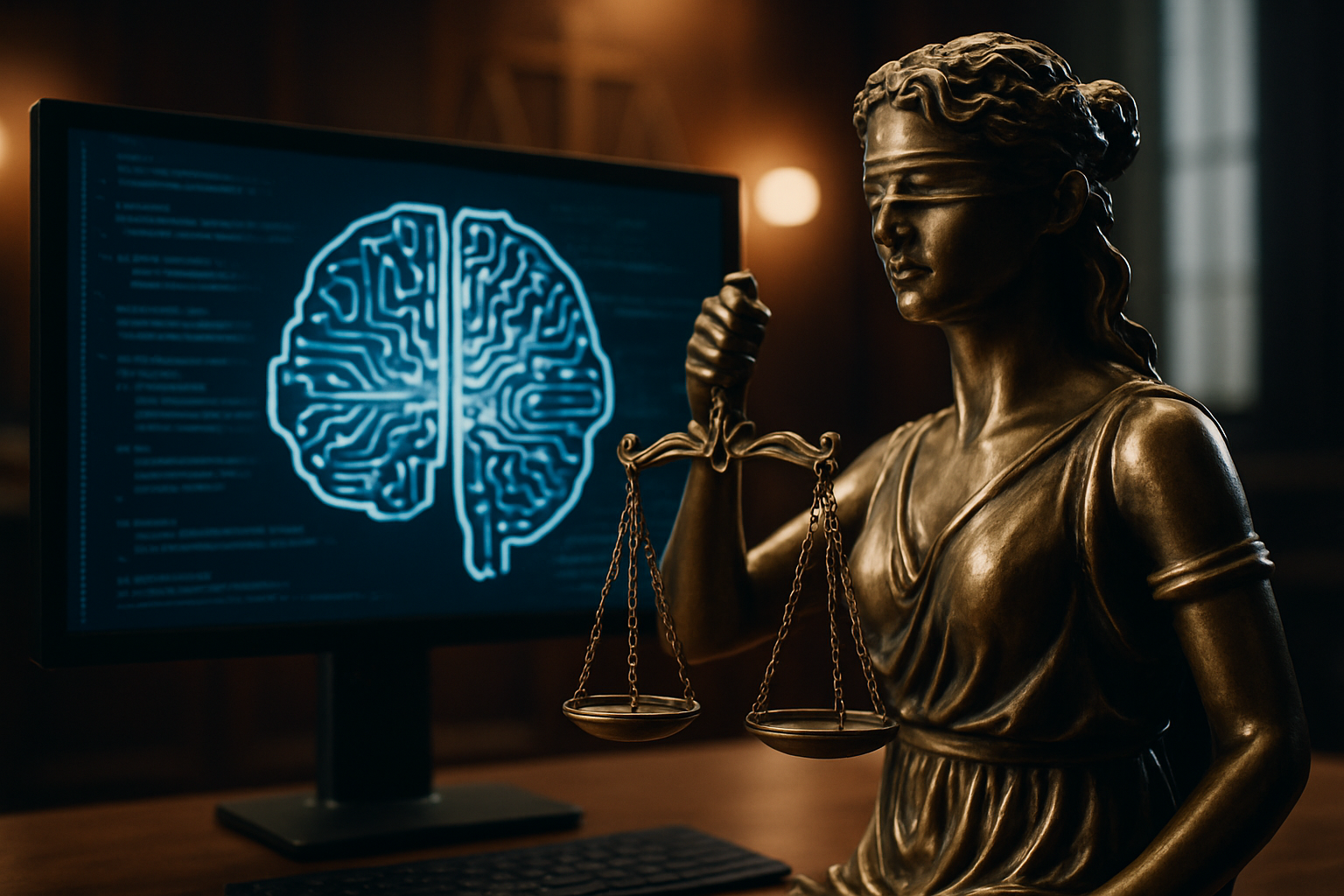Title: Algorithmic Justice: The Future of AI in Criminal Sentencing
Introduction: In the digital age, artificial intelligence is reshaping countless aspects of our lives, including the criminal justice system. As courts grapple with the potential of AI to enhance fairness and efficiency in sentencing, a new legal frontier emerges. This article delves into the complex world of algorithmic justice, exploring its promises, pitfalls, and the evolving legal landscape surrounding its implementation.

Legal Framework and Challenges
The implementation of AI in criminal sentencing raises numerous legal questions and challenges. One of the primary concerns is the potential for algorithmic bias, which could perpetuate or exacerbate existing inequalities within the justice system. Courts and lawmakers are grappling with how to ensure that these AI systems comply with constitutional protections, such as due process and equal protection under the law.
Landmark Cases and Judicial Precedents
Several landmark cases have begun to shape the legal landscape surrounding algorithmic justice. In State v. Loomis, the Wisconsin Supreme Court ruled that the use of a proprietary risk assessment algorithm in sentencing did not violate due process, provided that the algorithm was not the sole factor in determining the sentence. However, the court also emphasized the need for transparency and cautioned against over-reliance on algorithmic predictions.
Legislative Responses and Policy Initiatives
In response to the growing use of AI in criminal sentencing, legislators at both state and federal levels are proposing new laws and regulations. Some states have passed legislation requiring algorithmic impact assessments before implementing AI tools in the justice system. At the federal level, there are ongoing discussions about establishing national standards for the use of AI in sentencing, including requirements for transparency, accountability, and regular audits of these systems.
Ethical Considerations and Human Oversight
As AI continues to play a larger role in criminal sentencing, ethical considerations become increasingly important. Legal experts and policymakers are debating the appropriate balance between algorithmic efficiency and human judgment. Many argue for a hybrid approach that leverages the strengths of AI while maintaining significant human oversight. This could involve using AI as a decision-support tool rather than allowing it to make final determinations on sentencing.
The Future of AI in Criminal Justice
The integration of AI into criminal sentencing is likely to continue evolving rapidly. As technology advances and legal frameworks adapt, we can expect to see more sophisticated and nuanced applications of algorithmic justice. This may include the development of explainable AI systems that can provide clear rationales for their recommendations, as well as the incorporation of more diverse data sources to mitigate bias.
International Perspectives and Cross-Border Implications
The use of AI in criminal sentencing is not limited to the United States. Countries around the world are exploring similar technologies, leading to a diverse range of approaches and legal frameworks. This global dimension raises questions about cross-border cooperation, data sharing, and the potential for international standards in algorithmic justice. As criminals and criminal activities increasingly transcend national boundaries, the harmonization of AI-driven sentencing practices may become a critical issue in international law.
Conclusion
The intersection of artificial intelligence and criminal sentencing represents a pivotal moment in legal history. As courts, legislators, and legal scholars grapple with the implications of algorithmic justice, the balance between technological innovation and fundamental legal principles hangs in the balance. The coming years will be crucial in shaping a legal framework that harnesses the potential of AI while safeguarding the rights and fairness at the heart of our justice system. As this field continues to evolve, ongoing dialogue, research, and careful policy-making will be essential to ensure that algorithmic justice serves as a tool for enhancing, rather than undermining, the pursuit of justice for all.





